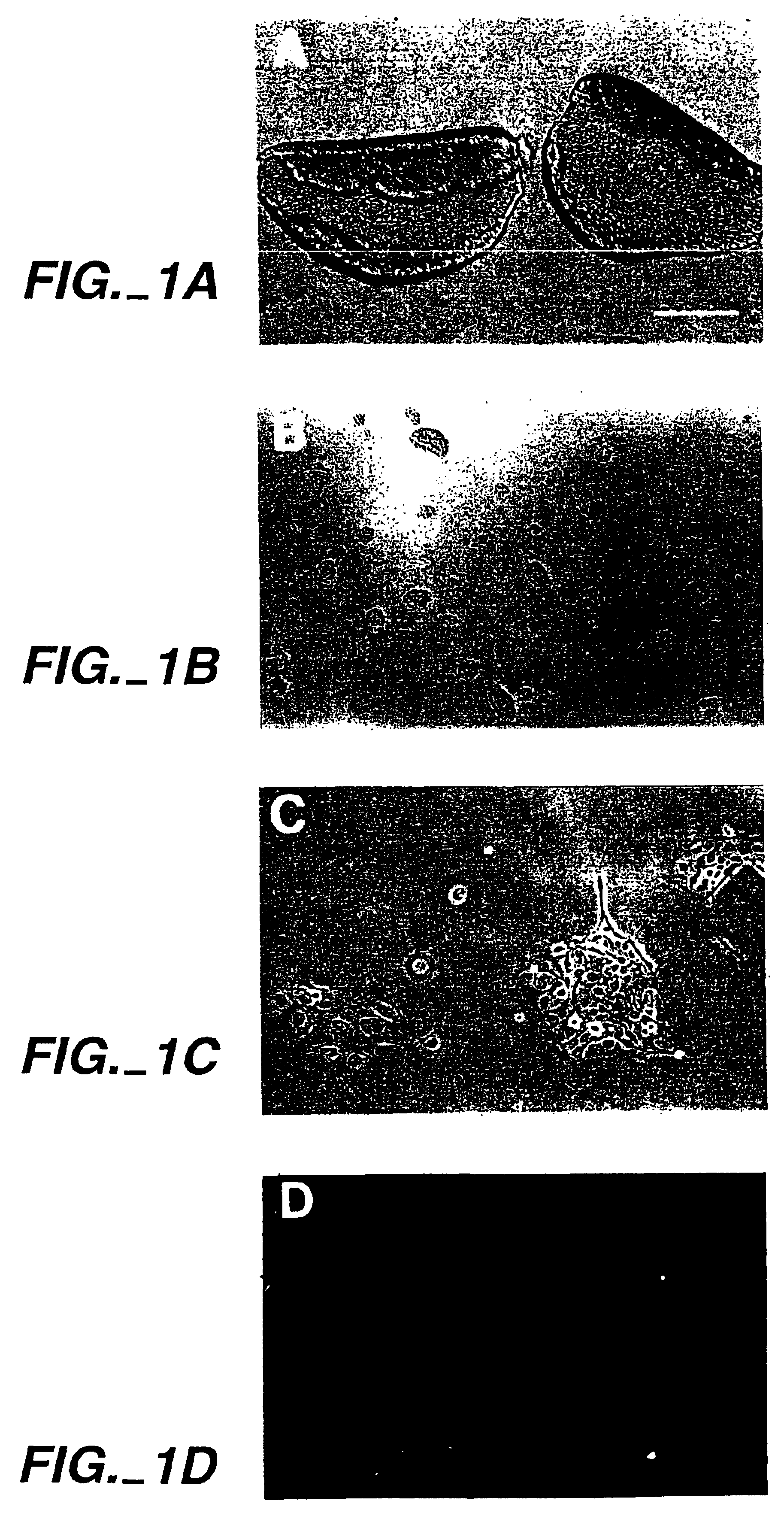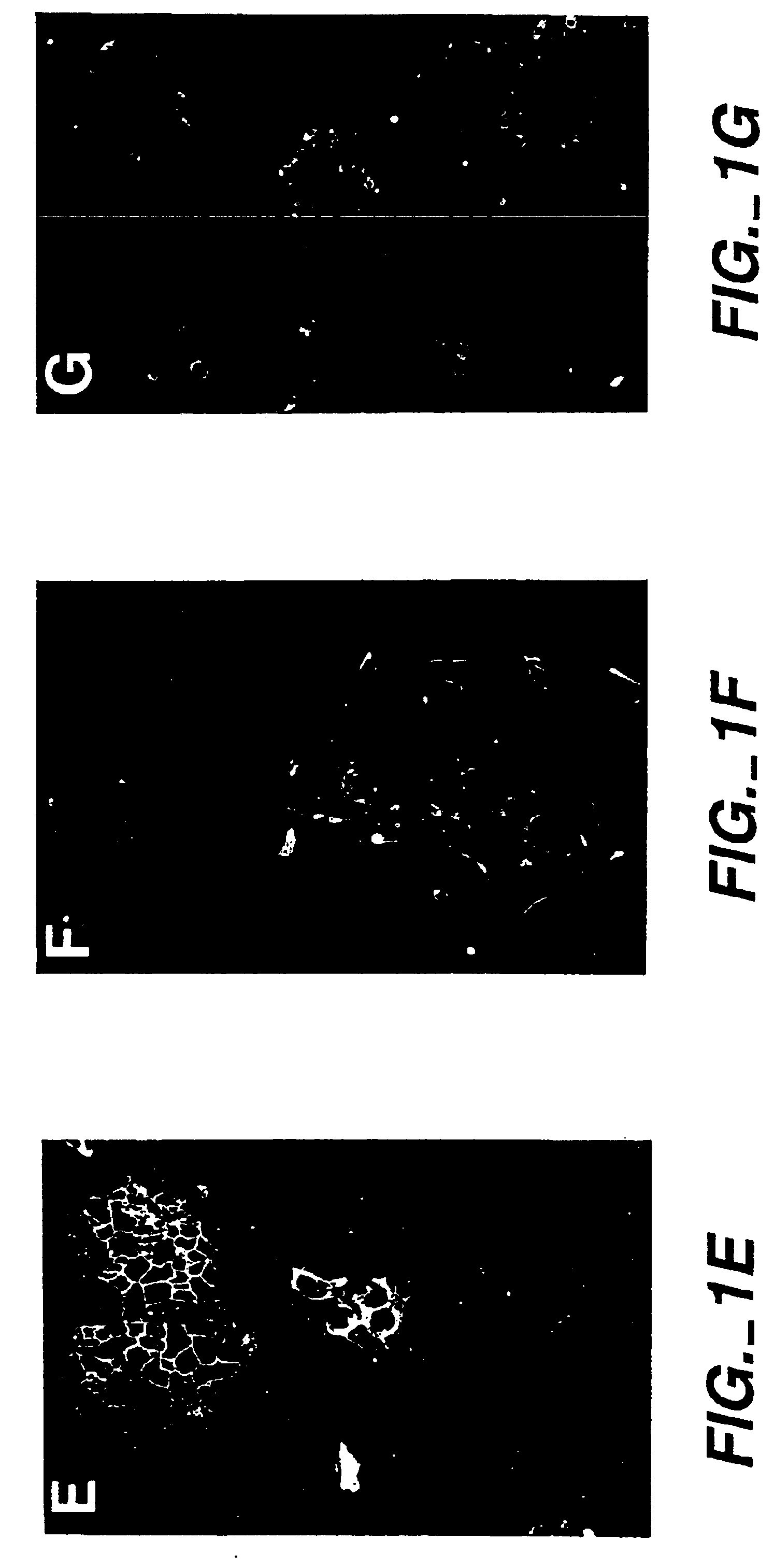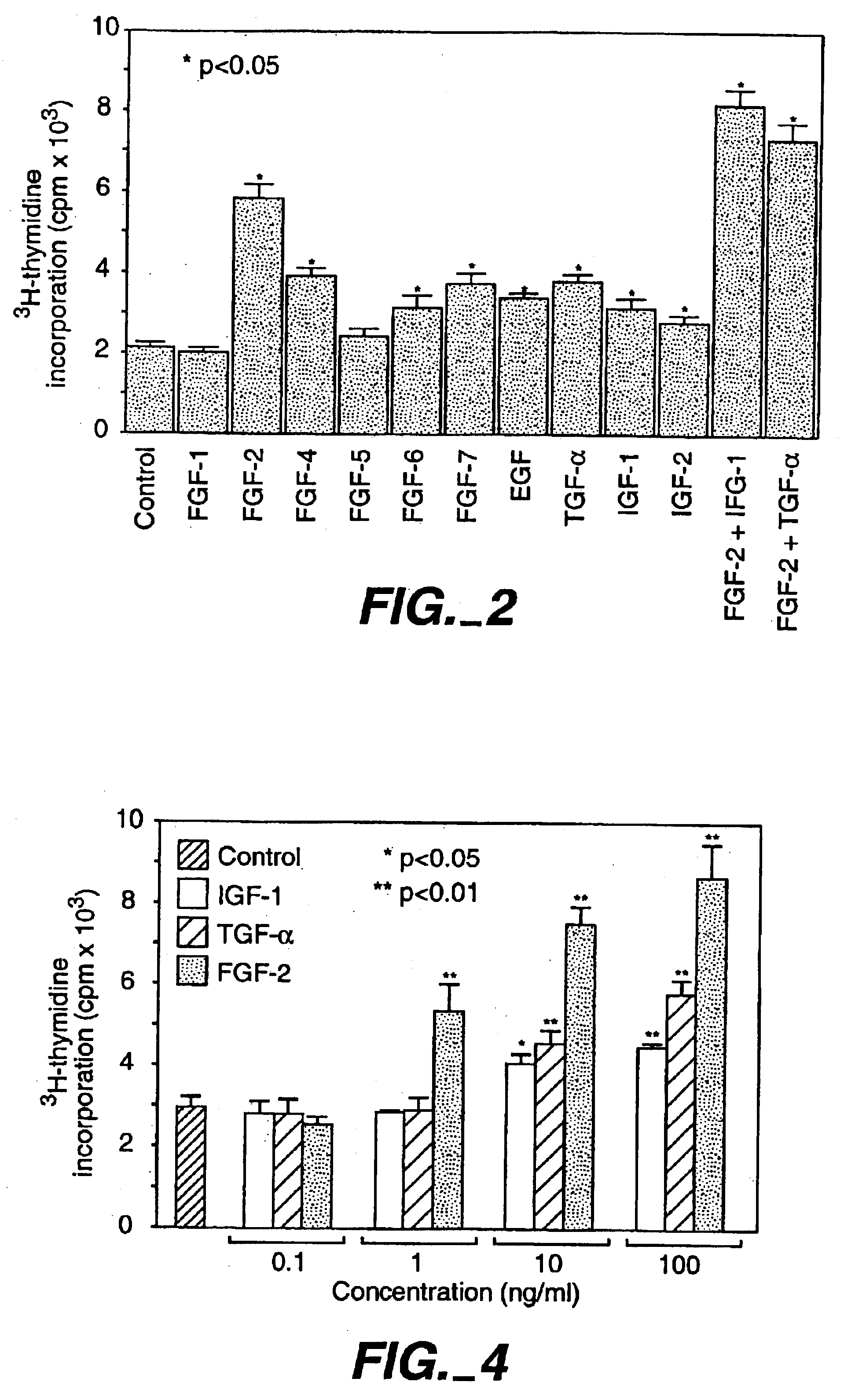Treatment of inner ear hair cells
a technology of inner ear hair cells and hair cells, which is applied in the direction of antibody medical ingredients, peptide sources, applications, etc., can solve the problems of serious handicaps affecting millions of people, hearing impairment, hearing loss, etc., and achieve the effects of reducing ototoxicity, preventing ototoxicity, and lowering ototoxicity
- Summary
- Abstract
- Description
- Claims
- Application Information
AI Technical Summary
Benefits of technology
Problems solved by technology
Method used
Image
Examples
example i
Characterization of Hair Cells
[0103]Cultured utricular epithelial cells were determined to express features of epithelial cells, but not those of fibroblast, glial or neuronal cells.
[0104]Utricular epithelial sheets were separated from postnatal day 4-5 (P4-5) Wistar rats using 0.5 mg / ml thermolysin (Sigma; in Hank's calcium and magnesium-free balanced salt solution) for 30 min at 37° C., based on the method reported previously (Corwin et al., 1995). The epithelial sheets (see FIG. 1A) were then incubated in a mixture of 0.125% trypsin and 0.125% collagenase for 8 min at 37° C. The enzyme activity was inactivated with a mixture of 0.005% soybean trypsin inhibitor (Sigma) and 0.005% DNase (Worthington) before being pipetted up and down with a 1 ml pipette tip 10 times in 0.05% DNase in BME. In this way, the epithelial sheets were partially dissociated into small pieces containing approximately 10-80 cells (FIG. 1B). Since we found that these cells grew very poorly in serum-free mediu...
example ii
Stimulation of Hair Cell Regeneration
[0108]To examine whether any of the presently known growth factors stimulate proliferation of the utricular supporting cells, we measured DNA synthesis using tritiated thymidine incorporation assays. To measure DNA synthesis, 3H-thymidine (2 μCi / well) was added for 24 hr at 24 hr of culture, and cells were harvested using a Tomtec cell harvester. Because the epithelial cells were grown on a polylysine substrate, trypsin (1 mg / ml) was added to the culture wells for 25 min at 37° C. to lift the cells before cell harvest. Cpm / well were then counted with a matrix 9600 gas counter (Packard Instrument Company, IL) as described previously (Gao et al., 1995). Data was collected from 5 or 10 culture wells from each of the experimental groups and expressed as mean±s.e.m. Two-tailed, unpaired t-test was used for statistical analysis. Under control culture conditions, a moderate level of thymidine uptake was detected.
[0109]Members of the FGF family including...
example iii
Comparison of Mitogens
[0114]To compare the potency of FGF-2 to IGF-1 and TGF-α, a dose-dependent study was carried out in the utricular epithelial cell cultures at a range of 0.1-100 ng / ml (FIG. 4). At a concentration of 0.1 ng / ml, none of the three growth factors showed a detectable effect (p>0.05). At a concentration of 1 ng / ml, FGF-2 displayed a significant mitogenic effect (P4). The higher potency of FGF-2 than that of IGF-1 or TGF-α was also observed with BrdU immunocytochemistry (Table 2).
[0115]To determine whether FGF-2 and IGF-1 or TGF-α act synergistically, FGF-2 was added to the cultures together with either IGF-1 or TGF-α. Both tritiated thymidine incorporation and BrdU immunocytochemistry confirmed that combinations of FGF-2 and IGF-1 or FGF-2 and TGF-α resulted in a significantly higher cell proliferation (p2 and Table 2). FGF-2 was a more potent mitogen than IGF-1 or TGF-α.
[0116]In addition to FGF family members, IGF-1, IGF-2, TGF-α and EGF, many other growth factors h...
PUM
 Login to View More
Login to View More Abstract
Description
Claims
Application Information
 Login to View More
Login to View More - R&D
- Intellectual Property
- Life Sciences
- Materials
- Tech Scout
- Unparalleled Data Quality
- Higher Quality Content
- 60% Fewer Hallucinations
Browse by: Latest US Patents, China's latest patents, Technical Efficacy Thesaurus, Application Domain, Technology Topic, Popular Technical Reports.
© 2025 PatSnap. All rights reserved.Legal|Privacy policy|Modern Slavery Act Transparency Statement|Sitemap|About US| Contact US: help@patsnap.com



